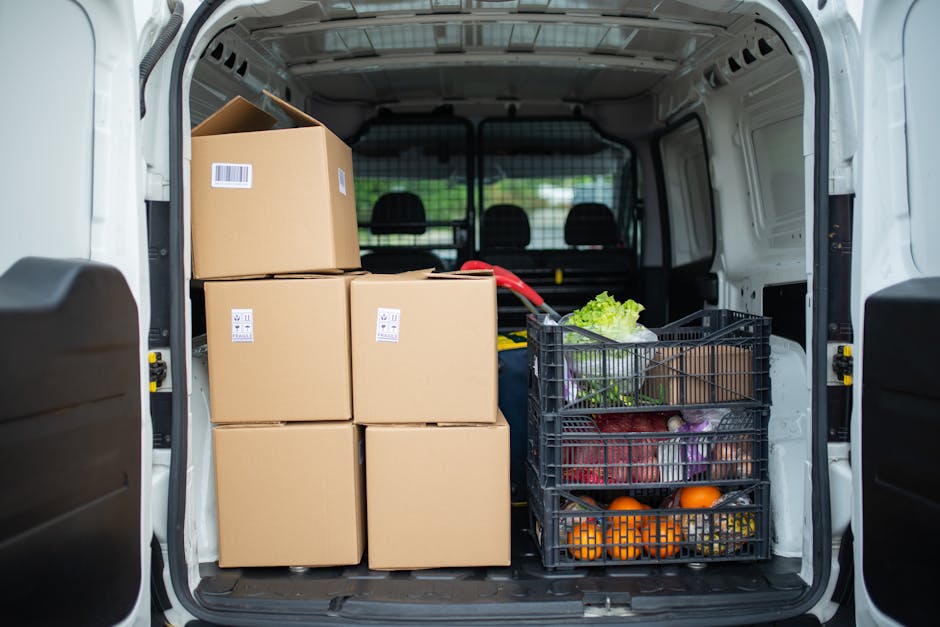Sustainability in Freight: A How-To Guide
Did you know that the freight industry is responsible for nearly 30% of global CO2 emissions? It’s a staggering number that calls for immediate action. As consumers and businesses, we have the power to make freight more sustainable. So, how can we do that? This guide will walk you through some easy and effective ways to reduce the environmental impact of freight.
What Is Sustainable Freight?

Sustainable freight refers to transportation methods that minimize environmental harm. This includes reducing emissions, conserving energy, and using resources wisely. Think of it as a greener way to move goods from point A to point B.
But sustainability isn’t just about the environment. It also considers social and economic factors. A sustainable freight system is efficient, cost-effective, and fair for everyone involved.
Why Should We Care About Sustainability in Freight?

Many of us might wonder, Why does sustainable freight matter to me? Here are a few reasons:
- Environmental Protection: Lower emissions mean cleaner air and a healthier planet.
- Cost Savings: Efficient freight can save money, benefiting both businesses and consumers.
- Social Responsibility: Supporting sustainable practices is good for communities and future generations.
By caring about sustainable freight, you contribute to a better future for all.
How Can Businesses Make Freight More Sustainable?

Businesses play a vital role in improving freight sustainability. Here are some actionable steps:
1. Optimize Routes
One of the easiest ways to cut emissions is by optimizing delivery routes. Use technology to find the shortest and fastest paths. This reduces fuel consumption and saves time.
2. Switch to Eco-Friendly Vehicles
Consider using electric or hybrid vehicles for deliveries. They produce fewer emissions than traditional trucks. Plus, they can save money on fuel costs in the long run.
3. Embrace Intermodal Shipping
Intermodal shipping uses more than one mode of transport. For instance, goods might travel by truck, then switch to a train. This method can reduce emissions significantly.
4. Use Sustainable Packaging
Packaging can be wasteful. Opt for recyclable or biodegradable materials. This small change can have a big impact on your carbon footprint.
What Can Individuals Do to Support Sustainable Freight?

Every little bit helps! Heres how you can contribute:
1. Choose Eco-Friendly Options
When buying online, look for sellers that use sustainable shipping methods. Many companies now offer carbon-neutral shipping options.
2. Advocate for Change
Use your voice! Support policies and initiatives that promote sustainable freight. Whether it’s local regulations or larger legislation, your opinion matters.
3. Support Local Businesses
Buying from local suppliers means shorter shipping distances. This reduces emissions and helps your community thrive.
What Are Some Common Misconceptions About Sustainable Freight?
Lets clear the air about a few myths:
1. Sustainable Freight Is Too Expensive
While there may be upfront costs, the long-term savings often outweigh them. Efficient practices can cut operational costs significantly.
2. it’s Only for Large Companies
Sustainable practices can be adopted by businesses of all sizes. Even small tweaks can lead to big changes.
3. it’s Not My Responsibility
We all share the planet. Every action counts, no matter how small. Your choices can drive change.
What Are the Benefits of Sustainable Freight?
Investing in sustainable freight has numerous advantages:
- Improved Brand Image: Companies that prioritize sustainability often enjoy better reputations.
- Regulatory Compliance: Many regions are tightening regulations. Sustainable practices help businesses stay ahead.
- Innovation: Embracing new technologies can lead to advancements and efficiencies.
These benefits show that sustainability is not just a trend; it’s the future of freight.
How to Measure Your Freight’s Sustainability
it’s important to track your progress. Here are some metrics to consider:
- Carbon Footprint: Measure the total greenhouse gases emitted.
- Fuel Efficiency: Track how much fuel your fleet uses over distance traveled.
- Waste Reduction: Monitor how much waste comes from packaging and shipping materials.
By measuring these factors, businesses can identify areas for improvement and celebrate successes.
What Are the Future Trends in Sustainable Freight?
The future of sustainable freight looks promising. Here are a few trends to watch:
- Electric Vehicles: More companies are investing in electric trucks and delivery vans.
- Smart Logistics: AI and data analytics will help optimize routes and reduce waste.
- Green Certifications: Expect more businesses to pursue certifications that prove their sustainability efforts.
These trends show that the freight industry is moving in a positive direction.
Final Thoughts: How Can You Contribute?
As we’ve explored, sustainable freight is essential for our planets health. Whether you’re a business owner or a consumer, you can make a difference. Here are some key takeaways:
- Evaluate your shipping methods and look for ways to improve.
- Support companies that prioritize sustainability.
- Stay informed about new technologies and practices in freight.
Making freight more sustainable is a collective effort. Together, we can create a greener future for generations to come.
For more information on sustainable practices in logistics, check out the Sustainable Business Network.
Let’s take action today for a better tomorrow!



